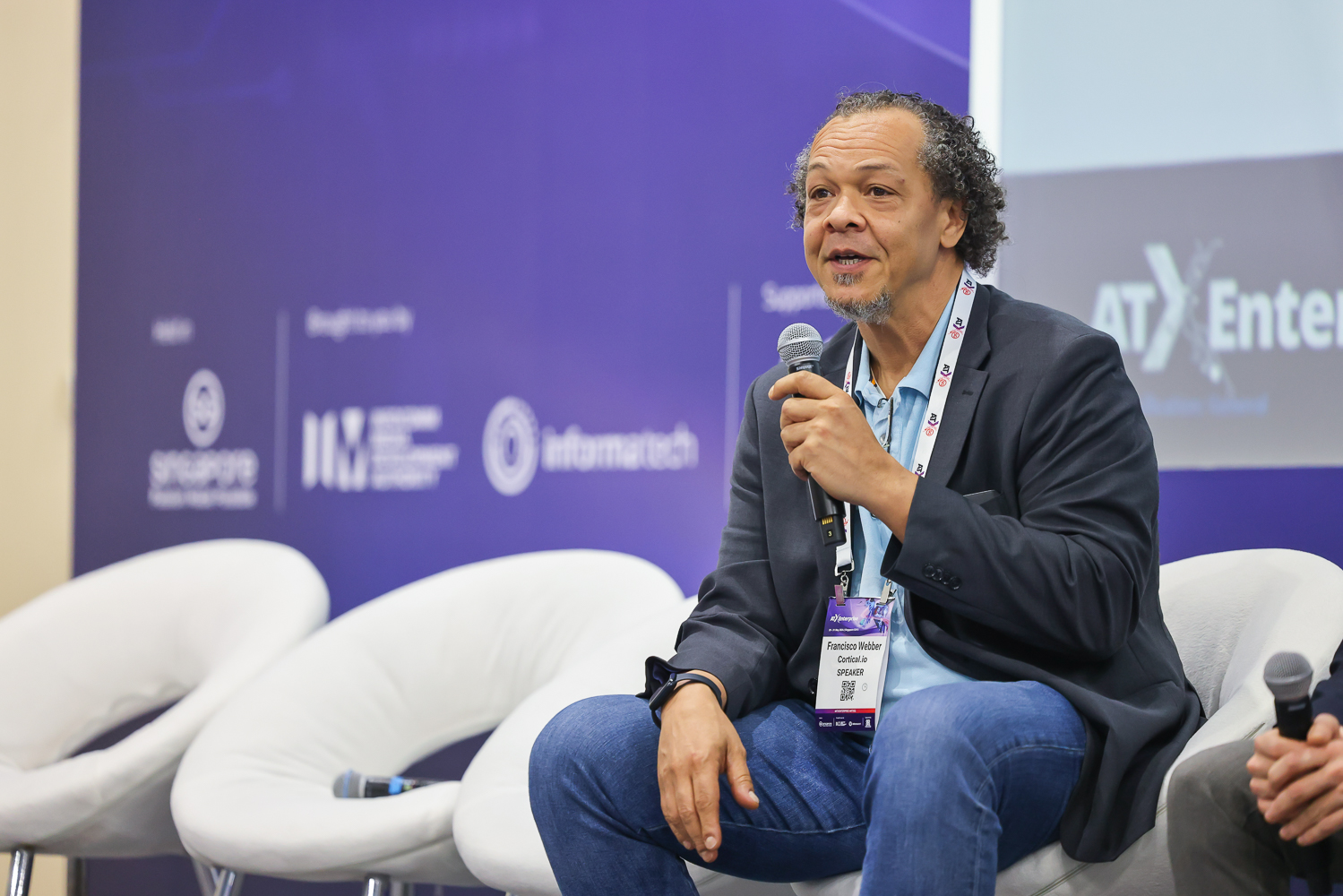As artificial intelligence (AI) continues to integrate with robotics, a human-centric design approach is becoming increasingly critical. AI-driven robots are expected to not only perform tasks but also enhance human potential by working alongside people in meaningful ways. At the recent ATxEnterprise event, industry experts discussed how AI is shaping the future of robotics, exploring both the challenges and opportunities that come with human-centric design in these technologies.
(Explore more about the future of AI and robotics at ATxEnterprise here.)

Rethinking AI's Role in Robotics
The intersection of AI and robotics opens up exciting new possibilities, but it also presents significant challenges. According to Francisco Webber, AI technologies like Large Language Models (LLMs) excel in processing language but fall short of achieving true human-like understanding. While LLMs can interpret vast amounts of data and provide contextually relevant responses, they are limited by their inability to grasp the world beyond the data they have been trained on.
Moderator Oliver Tian expanded on this by explaining that LLMs rely on deductive reasoning, drawing from past data to predict outcomes. In contrast, human intelligence is inductive, allowing people to generate insights beyond what is immediately available. The panelists agreed that for AI to truly complement human abilities, it needs to evolve beyond language comprehension and develop a deeper understanding of context.
(Learn more about AI's current limitations and future innovations by exploring the conference agenda.)

The Educational Sector: A Case Study in AI Adoption
As AI becomes more integrated into different industries, education remains a key area of both opportunity and challenge. Pablo Alvarez highlighted the specific difficulties of applying AI in education, cautioning against viewing AI as a one-size-fits-all solution. Bias in training data and the lack of contextual understanding are two significant hurdles that must be addressed before AI can be effectively implemented in classrooms.
Alvarez emphasised the importance of co-creation with end users, sharing an example from his work developing AI-based learning platforms for students with intellectual disabilities. By collaborating with teachers and learners, Alvarez’s team was able to create tailored solutions that better serve the unique needs of their audience. This approach underscores the necessity of ensuring that AI is designed to fit its intended use, particularly in sensitive environments like education.
(Interested in the future of AI in education? Pre-register for ATxEnterprise 2025 to stay informed on key topics.)
Human-Centric Design: Putting People at the Centre of Robotics
The future of robotics lies in human-centric design, where AI is not simply a tool but a partner in enhancing human capabilities. Francisco Webber explained that the real potential of robotics is unlocked when AI systems can be programmed using natural language. This would make robots more adaptable and versatile, especially in environments where they interact directly with people.
Pablo Alvarez illustrated this with a practical example: a service robot for hotels, designed with input from both staff and guests. This co-creation process ensured that the robot addressed real-world needs, enhancing its effectiveness and user adoption. The panelists agreed that robotics solutions must focus on augmenting human abilities rather than replacing human workers, ensuring that technology amplifies, rather than diminishes, the value of human labour.
(Explore sponsorship opportunities at ATxEnterprise 2025 to showcase your AI and robotics solutions here.)

The Future of AI in Human-Centric Robotics
The session at ATxEnterprise made it clear that while advancements in AI and robotics offer immense potential, there are also substantial challenges to overcome. Current LLMs and AI technologies are impressive, but they are far from achieving the nuanced understanding that human interaction demands. The future of AI in robotics will require a shift towards collaborative design, where end users play an active role in shaping how AI-powered robots are built and deployed.
For these technologies to truly benefit society, ethical considerations must also come into play. From education to hospitality, industries must prioritise not only operational efficiency but also the human impact of AI and robotics. By keeping human needs at the centre of design and development, these technologies can become powerful tools for enhancing human capabilities and improving everyday life.
(Want to join the conversation on AI and robotics? Apply to be a speaker at ATxEnterprise 2025.)
A Human-Centric Future for AI and Robotics
As AI and robotics continue to evolve, the need for a human-centric approach becomes increasingly clear. The session at ATxEnterprise highlighted the challenges and opportunities of integrating AI into human environments, from addressing the limitations of LLMs to ensuring that AI enhances, rather than replaces, human labour. As industries across the globe adopt these technologies, collaboration with end users and a commitment to ethical deployment will be essential in creating AI-driven solutions that truly serve human needs.
(Stay ahead of the latest trends in AI and robotics by pre-registering for ATxEnterprise 2025.)

